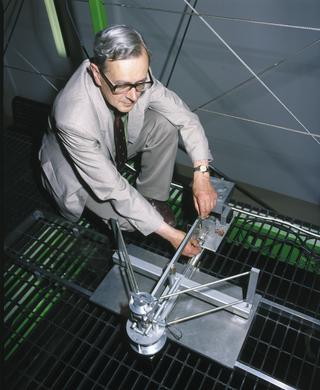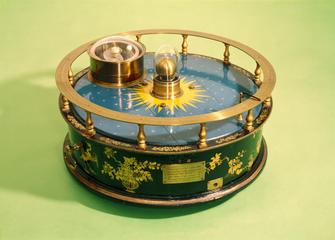
Digital Optical Module (DOM) from the IceCube neutrino detector
- Made:
- 2007-2008 in United States
- maker:
- IceCube and Lawrence Berkeley National Laboratory




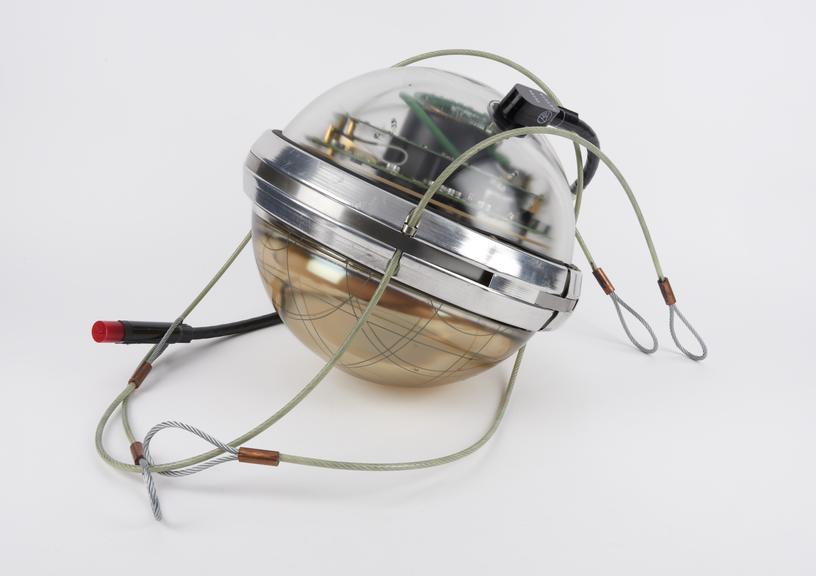
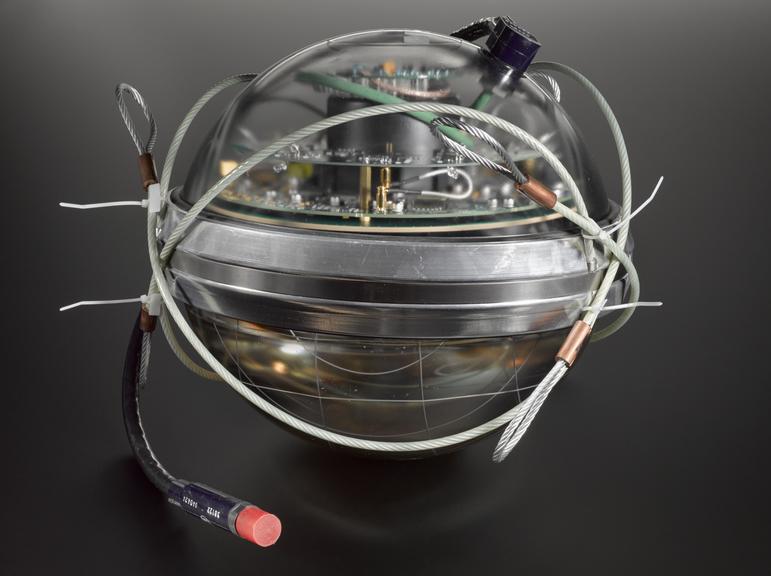
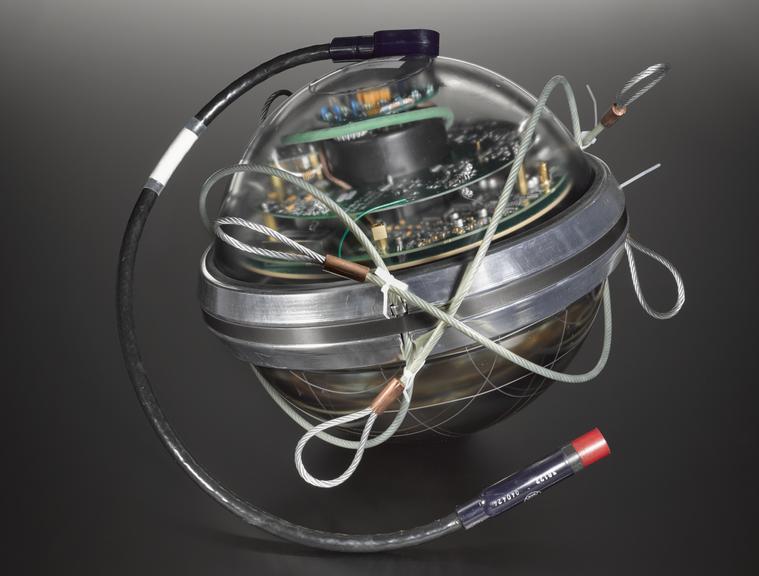
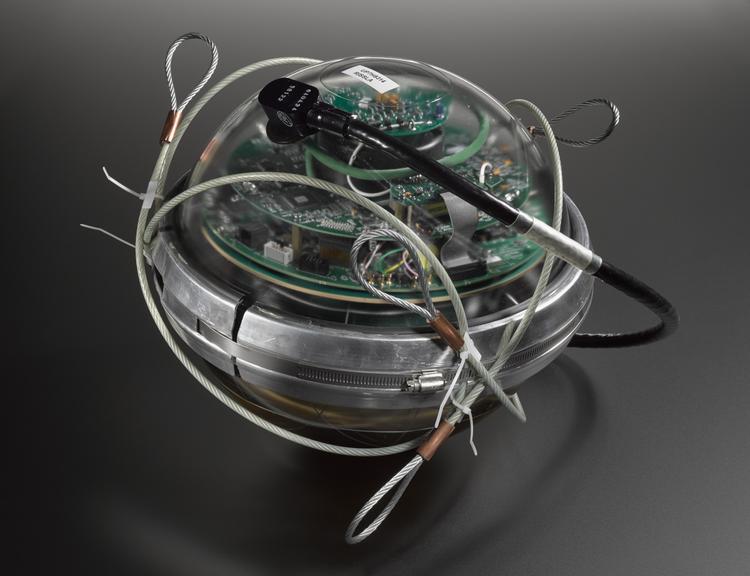
Digital Optical Module (DOM) from the IceCube neutrino detector. Designed by IceCube consortium led by University of Wisconsin-Madison and Lawrence Berkeley National Laboratory, USA and deployed at the IceCube observatory in Antarctica.
IceCube, the world’s largest neutrino detector, is based at the South Pole. Buried within a square kilometre of Antarctic ice is an array of 3600 Digital Optical Modules. The DOMs are held on "strings" of sixty modules each at depths ranging from 1,450 to 2,450 meters, inserted into holes melted in the ice by a hot water drill.
IceCube detects neutrinos – high-energy particles given out in violent astronomical events like stellar explosions, gamma ray bursts and black hole collisions – by looking for radiation emitted by charged particles that are created when neutrinos react with the water molecules in the ice. Because neutrinos only rarely interact with matter, very large and sensitive detectors are required to detect enough of them to pinpoint their source, and it can be hard to separate the signal out from interference. The clever IceCube design means that the neutrinos travel through a very pure and transparent ‘lens’ of Antarctic ice, in which there are no other signals to confuse the detected radiation. The radiation is detected by photomultiplier tubes within the DOMs and the signal sent by cable to the surface for analysis.
Details
- Category:
- Astronomy
- Object Number:
- 2015-335
- Measurements:
-
overall: 250 mm, 9kg
- type:
- digital optical module
- copyright:
- Wisconsin IceCube Particle Astrophysics Center (WIPAC)
- credit:
- Wisconsin IceCube Particle Astrophysics Center
